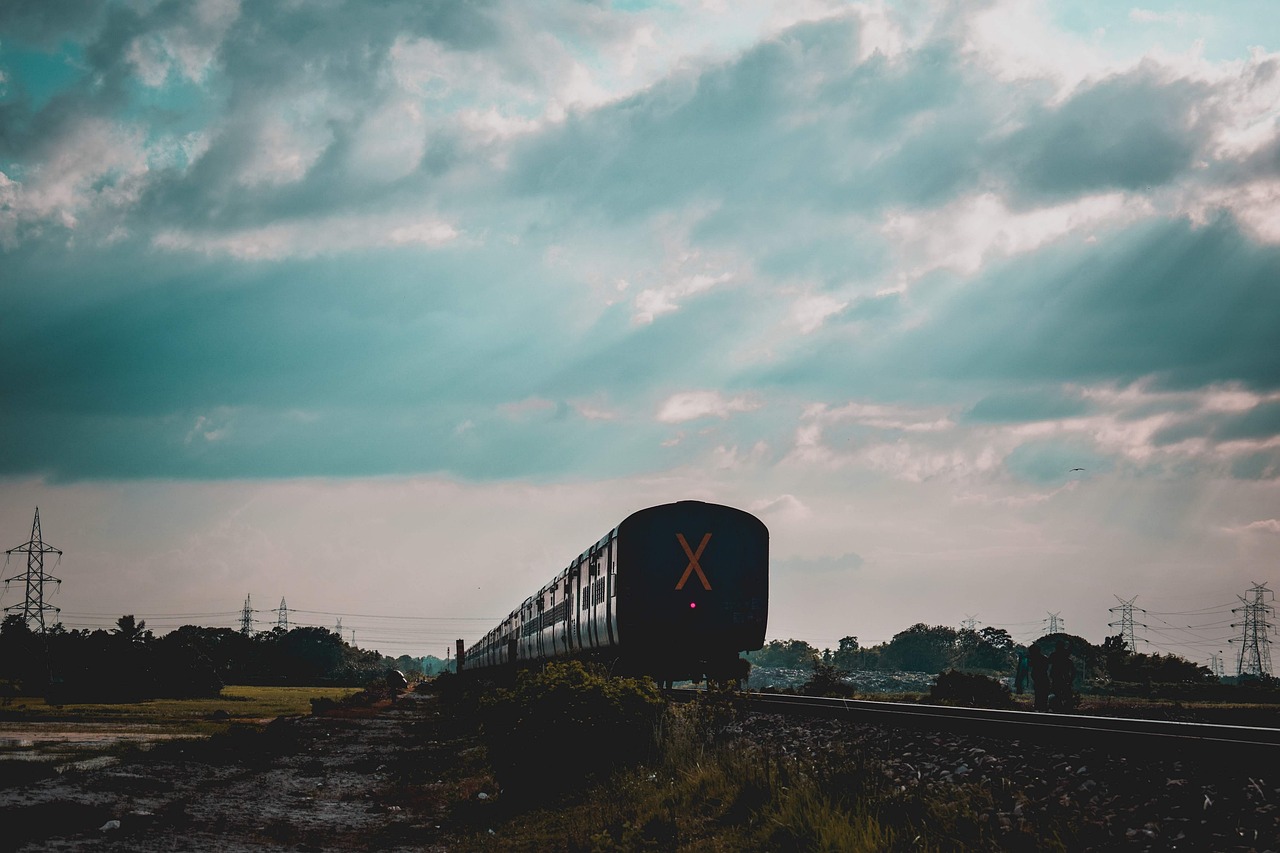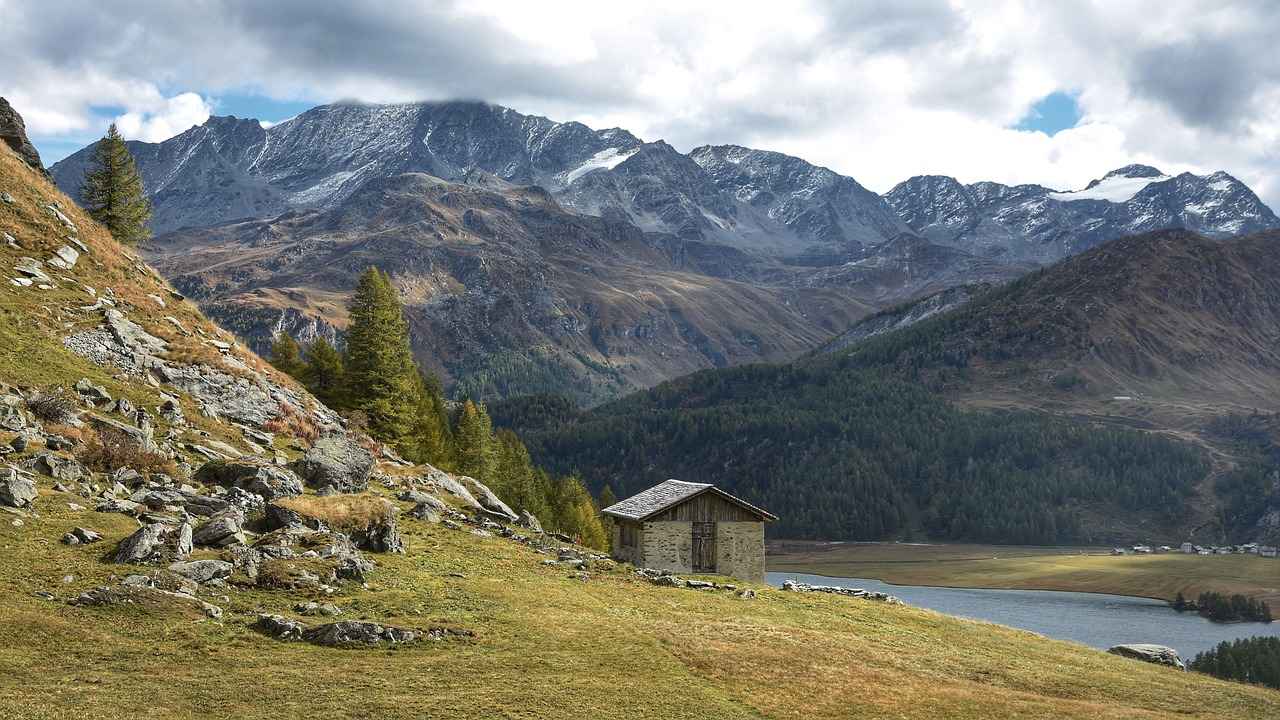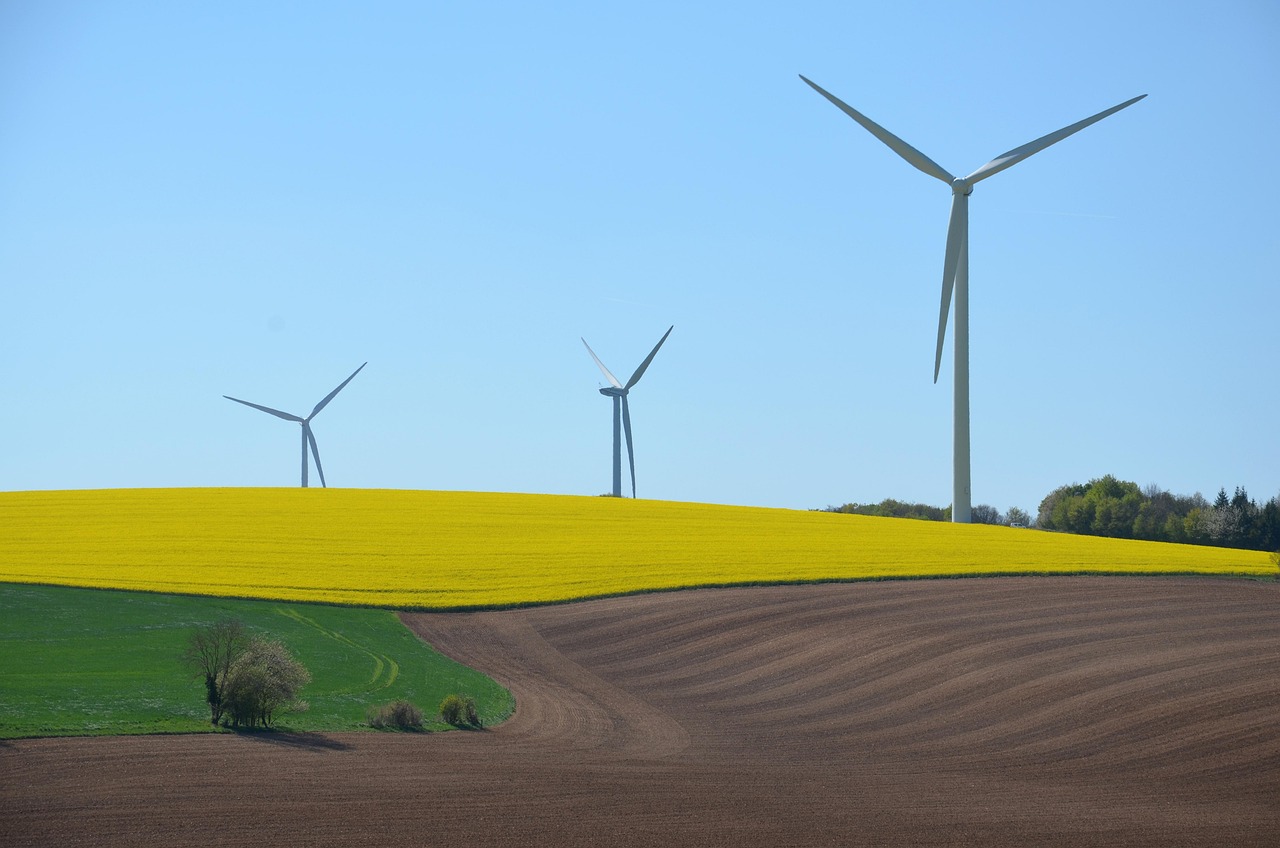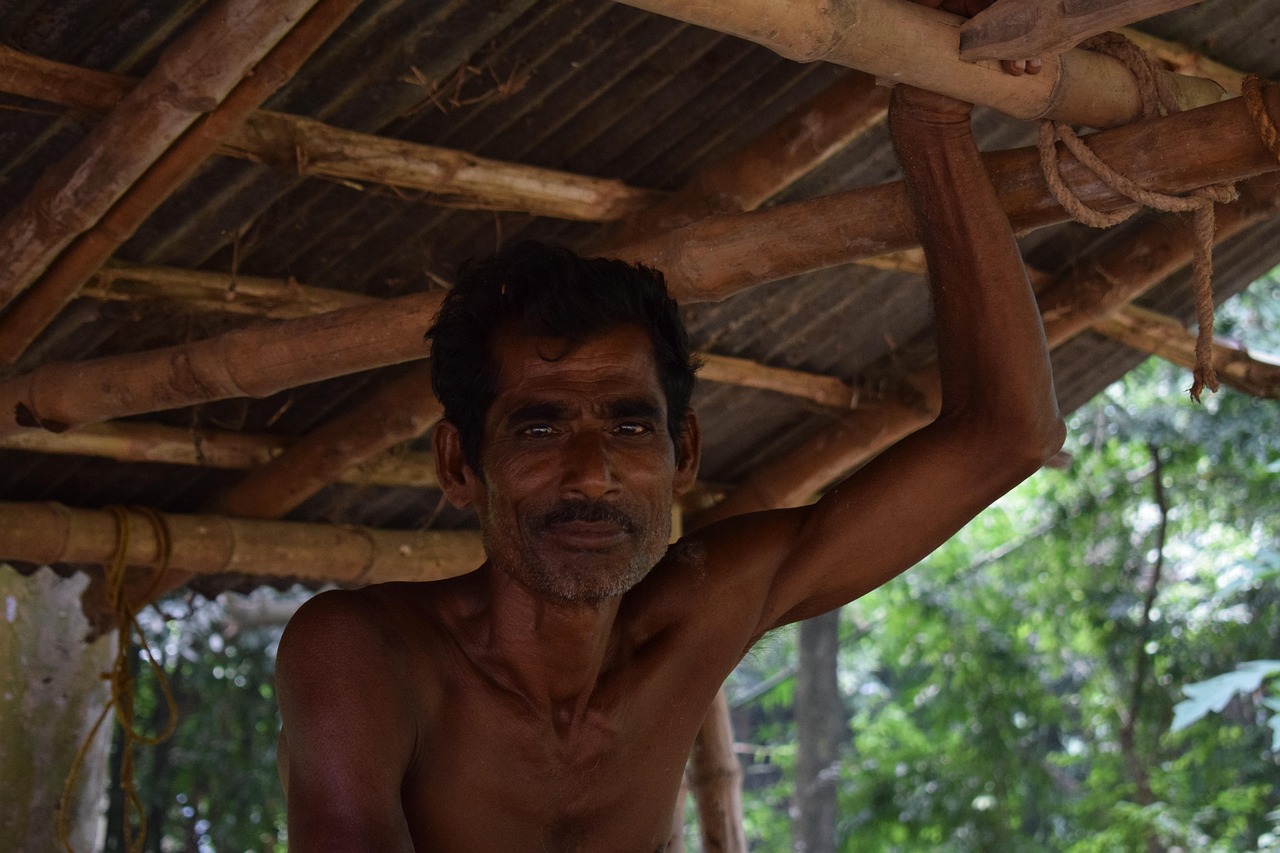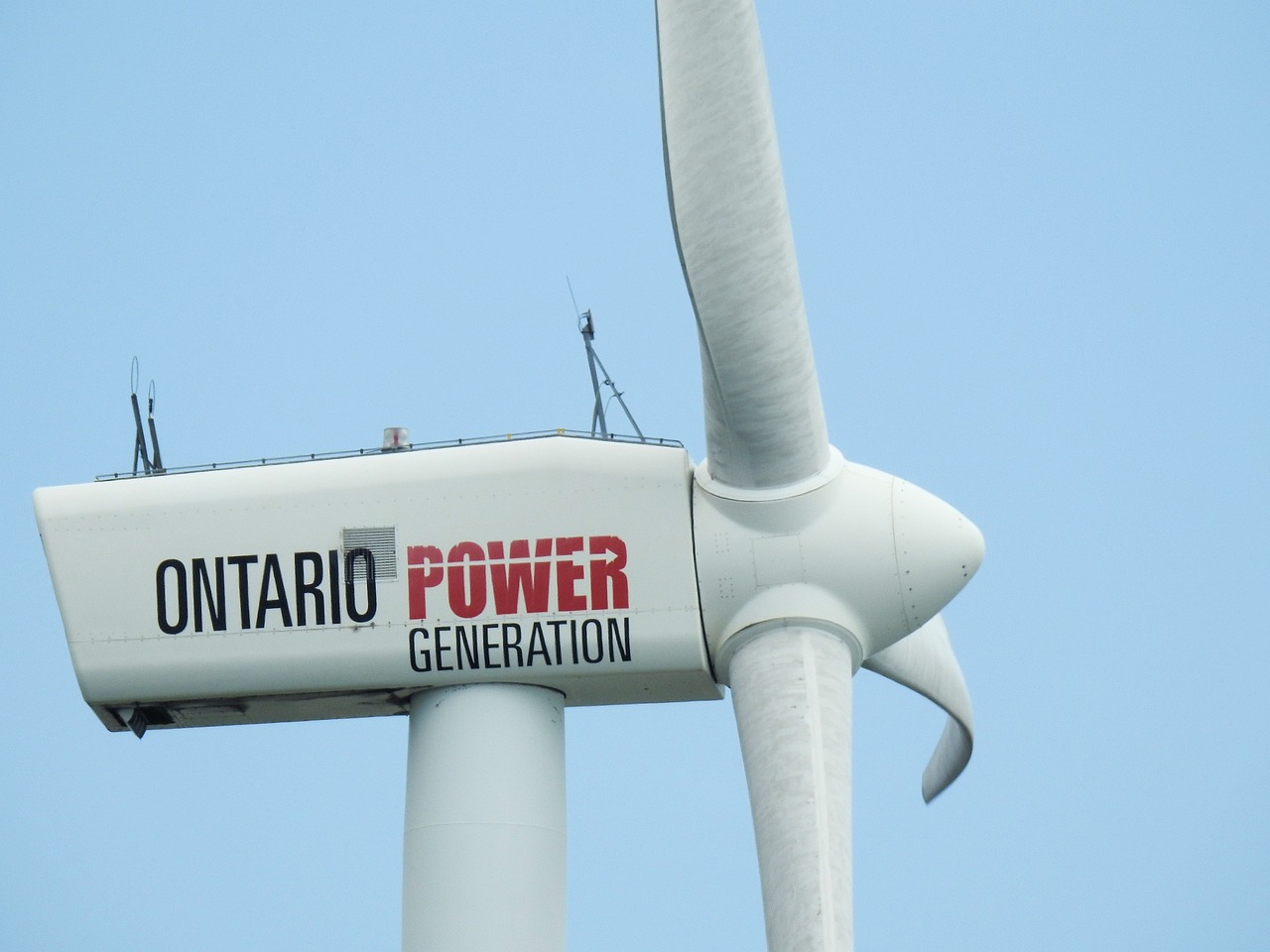This article explores West Bengal’s contributions to India’s green energy initiatives, highlighting advancements in renewable energy, government policies, and community involvement that are shaping a sustainable future.
Introduction to West Bengal’s Green Energy Initiatives
West Bengal has emerged as a pivotal player in India’s green energy landscape, driven by its commitment to sustainable development and renewable energy sources. The state’s diverse geography and favorable climate conditions provide an excellent foundation for various renewable energy projects.
Government Policies Supporting Green Energy
The state government has implemented numerous policies and incentives aimed at promoting renewable energy projects. These initiatives encourage investment, facilitate the transition to clean energy, and support local businesses in adopting sustainable practices.
- Subsidies for Renewable Projects: Financial assistance for solar and wind energy projects.
- Tax Benefits: Tax exemptions for companies investing in green energy.
- Streamlined Approvals: Simplified processes for project approvals to accelerate development.
Solar Energy Initiatives in West Bengal
West Bengal’s solar energy initiatives focus on harnessing solar power through solar parks, rooftop installations, and community solar projects to meet rising energy demands sustainably. The state has set ambitious targets to increase its solar capacity.
Major Solar Projects in the State
| Project Name | Location | Capacity (MW) |
|---|---|---|
| Purulia Solar Park | Purulia | 100 |
| Bankura Solar Project | Bankura | 50 |
Community Solar Programs
Community solar programs enable local residents to participate in solar energy production, fostering a sense of ownership and promoting energy independence among communities. This grassroots approach ensures that the benefits of renewable energy are widely shared.
Wind Energy Development in West Bengal
Wind energy plays a crucial role in West Bengal’s renewable energy strategy, with several wind farms established along the coastal regions to harness wind resources effectively. These projects contribute significantly to the state’s energy mix.
Hydropower Potential and Projects
The diverse geography of West Bengal offers significant hydropower potential. Several projects are underway to optimize the state’s rivers for energy generation while minimizing environmental impacts.
Community Involvement in Renewable Energy
Local communities play a vital role in West Bengal’s green energy revolution, actively participating in renewable energy projects and advocating for sustainable practices. Grassroots movements are instrumental in raising awareness and promoting community-led initiatives.
Conclusion: West Bengal’s Commitment to Sustainability
West Bengal’s proactive approach to renewable energy underscores its commitment to sustainability and serves as a model for other states in India aiming to transition to green energy solutions. By fostering innovation and community engagement, West Bengal is paving the way for a greener future.
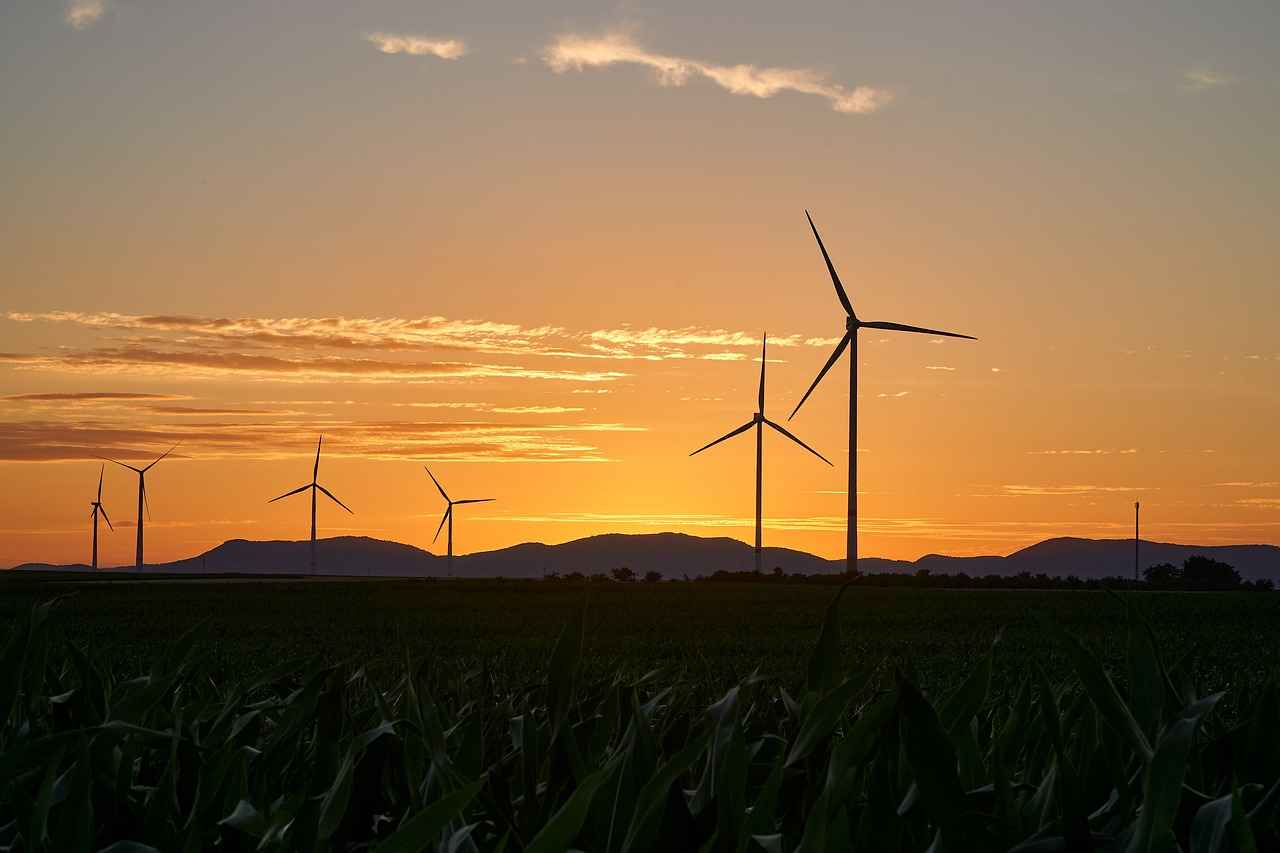
Introduction to West Bengal’s Green Energy Initiatives
West Bengal has firmly established itself as a key player in India’s green energy sector, reflecting a strong commitment to sustainable development and the promotion of renewable energy sources. The state’s strategic initiatives are not only reshaping its energy landscape but also contributing significantly to the national goals of reducing carbon emissions and enhancing energy security.
As part of its green energy revolution, West Bengal is focusing on a diverse range of renewable energy sources, including solar, wind, and hydropower. This multifaceted approach is designed to leverage the state’s unique geographical advantages and abundant natural resources. The government has launched several programs aimed at increasing the adoption of clean energy technologies, thereby encouraging both private investment and community participation.
In recent years, West Bengal has witnessed a surge in solar energy projects, with solar parks and rooftop installations becoming increasingly common. These initiatives not only help meet the rising energy demands but also create job opportunities within the local communities. Furthermore, the state is actively promoting wind energy, particularly in coastal areas where wind resources are plentiful.
Moreover, the implementation of hydropower projects is another critical aspect of West Bengal’s strategy. The state aims to optimize its river systems for energy generation while ensuring that environmental considerations are at the forefront of these developments.
Overall, West Bengal’s dedication to renewable energy initiatives exemplifies a comprehensive approach to sustainable energy production. By fostering innovation, encouraging community involvement, and implementing supportive government policies, the state is paving the way for a greener, more sustainable future.

Government Policies Supporting Green Energy
The Role of West Bengal in India’s Green Energy Revolution
West Bengal has made significant strides in its commitment to renewable energy, driven by a comprehensive set of government policies designed to support the transition to sustainable energy sources. The state government has recognized the importance of renewable energy in combating climate change and reducing dependence on fossil fuels. As a result, various initiatives have been launched to create a conducive environment for investment and innovation in this sector.
Incentives for Renewable Energy Projects
- Financial incentives such as subsidies and grants to encourage the establishment of renewable energy projects.
- Tax exemptions and reductions for companies investing in solar, wind, and hydropower initiatives.
- Streamlined permitting processes to facilitate quicker project approvals and implementation.
Encouraging Private Sector Participation
The government has actively sought to engage the private sector through public-private partnerships (PPPs). These collaborations aim to leverage private investment and expertise in developing renewable energy infrastructure. The state has also initiated awareness campaigns to inform potential investors about the benefits of participating in the green energy sector.
Community Engagement and Support
In addition to financial incentives, the government has implemented programs to educate local communities about the benefits of renewable energy. This community involvement is crucial for the successful implementation of projects, as it fosters a sense of ownership and responsibility among residents.
Future Prospects
Looking ahead, West Bengal aims to expand its renewable energy capacity significantly. The government is committed to enhancing its policy framework to adapt to the evolving energy landscape, ensuring that the state remains at the forefront of India’s green energy revolution.
In conclusion, the proactive measures taken by the West Bengal government not only support the growth of renewable energy projects but also pave the way for a sustainable future, setting an example for other states to follow.
Solar Energy Initiatives in West Bengal
West Bengal is making significant strides in the field of solar energy, driven by a vision to create a sustainable energy future. The state’s initiatives are focused on three primary areas: solar parks, rooftop installations, and community solar projects. These efforts are essential in addressing the increasing energy demands of the state while promoting environmental sustainability.
Solar Parks: A Hub for Renewable Energy
West Bengal has established several solar parks that serve as large-scale solar energy generation facilities. These parks harness the abundant sunlight available in the region, transforming it into clean energy. The parks not only contribute to the state’s energy supply but also create job opportunities and stimulate local economies.
Rooftop Solar Installations: Empowering Households
The government is actively promoting rooftop solar installations to enable households and businesses to generate their own electricity. This initiative not only reduces reliance on conventional power sources but also encourages energy independence among residents. Incentives and subsidies are provided to make these installations more affordable, ensuring wider adoption across various demographics.
Community Solar Projects: Fostering Local Involvement
Community solar projects are designed to engage local communities in the solar energy movement. These initiatives allow groups of residents to invest in shared solar installations, thereby benefiting from the generated energy. This collaborative approach not only promotes a sense of ownership but also educates communities about the importance of renewable energy.
Conclusion: A Bright Future Ahead
With its comprehensive approach to solar energy, West Bengal is paving the way for a greener future. By investing in solar parks, encouraging rooftop installations, and promoting community projects, the state is not only meeting its energy demands but also setting a benchmark for sustainability in India. As these initiatives continue to grow, West Bengal is poised to become a leader in renewable energy innovation.
Major Solar Projects in the State
West Bengal is making remarkable strides in its solar energy sector, demonstrating a strong commitment to sustainable energy solutions. As part of its ambitious vision, the state has initiated several key solar projects that not only aim to enhance energy generation but also focus on job creation and community development.
One of the most significant projects is the Purulia Solar Park, which spans over 1,000 acres and has a capacity of 1,000 MW. This project stands as a testament to West Bengal’s dedication to harnessing renewable energy, contributing significantly to the state’s power supply. Additionally, the park has generated numerous local jobs, providing employment opportunities in both construction and maintenance.
Another notable initiative is the Rooftop Solar Program, which encourages residential and commercial buildings to install solar panels. This program not only promotes energy independence but also reduces electricity costs for consumers. By incentivizing these installations, the government aims to achieve a target of 3,000 MW from rooftop solar systems by 2025.
In rural areas, the Community Solar Projects have been particularly impactful. These projects allow local residents to invest in solar energy collectively, fostering a sense of ownership and responsibility towards sustainable energy practices. By involving communities directly, West Bengal is ensuring that the benefits of solar energy reach every corner of the state.
Furthermore, the state government has established partnerships with various private sector players and NGOs to enhance the reach and effectiveness of these solar initiatives. Such collaborations are vital for driving innovation and ensuring that projects are implemented efficiently.
In conclusion, West Bengal’s major solar projects exemplify the state’s commitment to expanding its solar capacity. By focusing on both energy generation and job creation, these initiatives not only contribute to a greener future but also promote economic development within the region.
Community Solar Programs
are innovative initiatives that empower local residents to engage directly in solar energy production. These programs allow individuals, especially those who may not have suitable rooftops for solar panels, to benefit from renewable energy sources. By participating in community solar projects, residents can enjoy financial savings on their energy bills while contributing to a cleaner environment.
One of the most significant advantages of community solar programs is the sense of ownership they foster within communities. By coming together to invest in solar energy, residents develop a collective identity and commitment to sustainability. This collaboration not only enhances community bonds but also promotes energy independence, reducing reliance on traditional fossil fuels.
Moreover, community solar programs often lead to job creation and economic growth within local areas. As more people invest in these initiatives, the demand for skilled labor in installation, maintenance, and management of solar projects increases. This trend helps stimulate the local economy and provides new career opportunities for residents.
In addition to economic benefits, community solar projects contribute to the larger goal of reducing carbon emissions. By harnessing the power of the sun, these initiatives help mitigate the impacts of climate change and promote a sustainable future. The transition to renewable energy sources is crucial for achieving environmental goals and ensuring a healthier planet for future generations.
As more states and regions adopt community solar programs, the potential for widespread change becomes evident. These programs not only support individual households but also contribute to the overall energy landscape, paving the way for a more sustainable and resilient energy future.
In conclusion, community solar programs represent a vital step towards a greener future. They enable local residents to participate actively in solar energy production, fostering a sense of ownership and promoting energy independence. As communities continue to embrace these initiatives, they will play a crucial role in the transition to renewable energy.
Wind Energy Development in West Bengal
Wind energy development is a vital component of West Bengal’s renewable energy strategy, significantly contributing to the state’s commitment to sustainable energy solutions. With its strategic coastal location, West Bengal has harnessed its wind resources effectively, establishing several wind farms that play a crucial role in increasing the state’s energy capacity.
The state government has actively promoted wind energy through various incentives and policies, making it an attractive option for investors and developers. These initiatives have led to the establishment of wind farms in regions such as Purulia and the southern coastal areas, where wind speeds are optimal for energy generation.
| Wind Farm Name | Location | Installed Capacity (MW) |
|---|---|---|
| Purulia Wind Farm | Purulia | 50 |
| South 24 Parganas Wind Farm | South 24 Parganas | 100 |
| Medinipur Wind Project | Medinipur | 75 |
Each wind farm not only contributes to the energy grid but also creates job opportunities for local communities, promoting economic growth in these regions. The development of wind energy in West Bengal aligns with the broader national goals of reducing carbon emissions and transitioning to clean energy sources.
Furthermore, community involvement is crucial in the success of these projects. Local residents are often engaged in the planning and operational phases, fostering a sense of ownership and commitment to sustainable practices. This community-centric approach not only enhances the effectiveness of wind energy projects but also raises awareness about the importance of renewable energy in combating climate change.
In conclusion, wind energy development in West Bengal is a testament to the state’s dedication to a sustainable future. By leveraging its natural resources and engaging local communities, West Bengal is paving the way for a greener, more sustainable energy landscape.
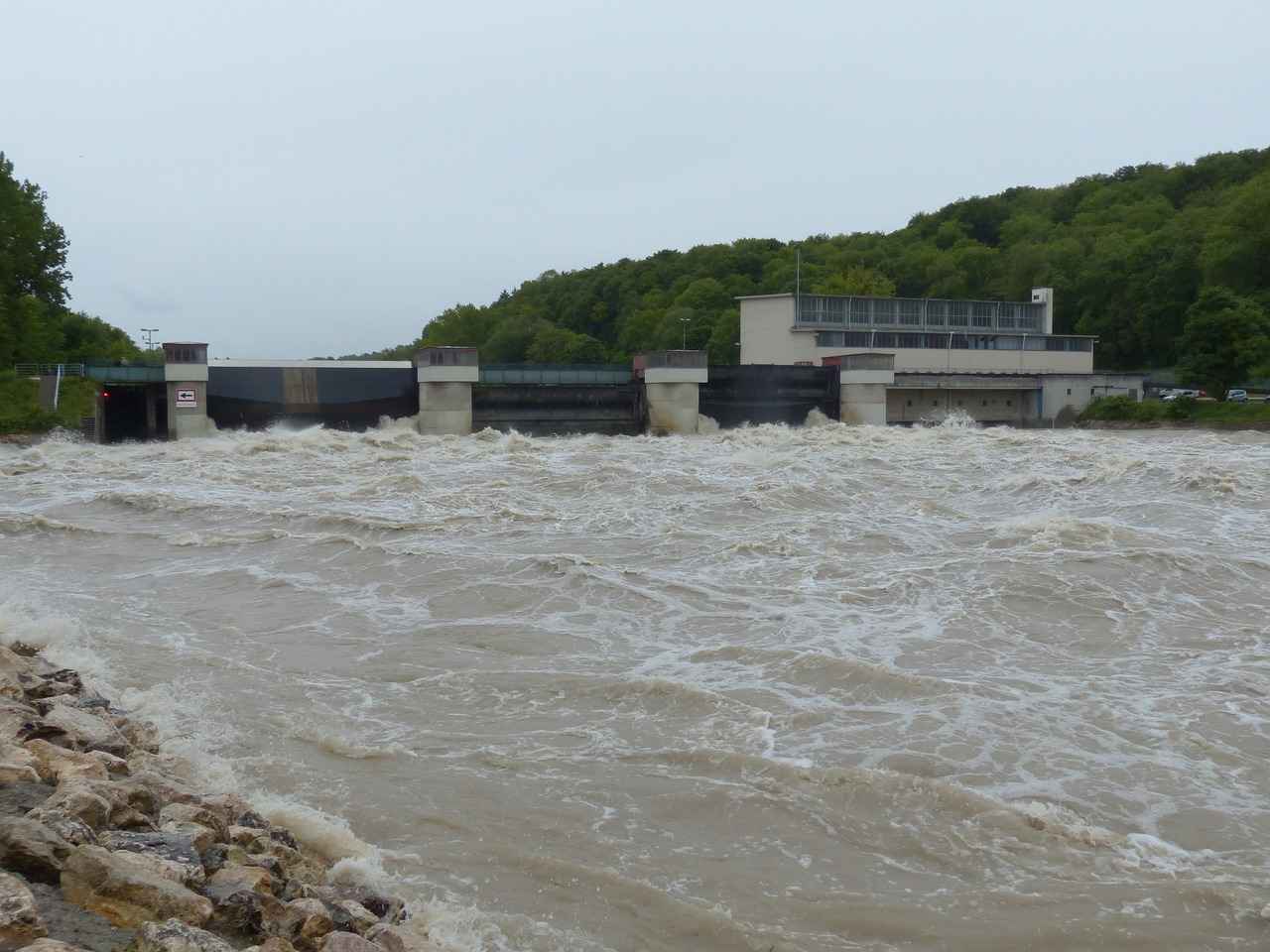
Hydropower Potential and Projects
West Bengal, with its diverse geography ranging from the Himalayan foothills to the fertile plains, presents a remarkable opportunity for hydropower generation. The state is endowed with numerous rivers and water bodies that can be harnessed to produce clean energy. This potential is being tapped into through various projects aimed at optimizing these water resources while ensuring minimal ecological disruption.
Several significant hydropower projects are currently underway in West Bengal, each designed to enhance the state’s energy security and contribute to its renewable energy goals. These initiatives not only focus on energy generation but also emphasize the importance of sustainability. The projects incorporate advanced technology and environmental assessments to mitigate adverse impacts on local ecosystems.
| Project Name | Location | Capacity (MW) | Status |
|---|---|---|---|
| Teesta Hydroelectric Project | Kalimpong | 510 | Under Construction |
| Jaldhaka Hydroelectric Project | Jalpaiguri | 120 | Operational |
| Raimatang Hydroelectric Project | Darjeeling | 30 | Proposed |
In addition to the technological advancements, West Bengal’s approach to hydropower includes a strong emphasis on community involvement. Local communities are engaged in the planning and execution of these projects, ensuring that their needs and environmental concerns are addressed. This collaborative approach not only fosters trust but also promotes a sense of ownership among residents.
Moreover, the state government has implemented policies to support sustainable practices in hydropower development. These include strict environmental regulations and incentives for projects that prioritize ecological balance. By focusing on sustainability, West Bengal aims to position itself as a leader in the renewable energy sector, paving the way for a greener future.
In conclusion, West Bengal’s hydropower potential is vast and largely untapped. With ongoing projects and a commitment to sustainability, the state is on the path to becoming a significant contributor to India’s renewable energy landscape.
Key Hydropower Projects in the Region
West Bengal, with its rich geographical diversity and abundant water resources, is strategically positioned to leverage hydropower as a significant contributor to its renewable energy portfolio. The state has initiated several major hydropower projects that not only enhance energy security but also play a crucial role in achieving the state’s renewable energy targets. These projects are designed to ensure a balanced energy mix, integrating hydropower with other renewable sources such as solar and wind energy.
| Project Name | Location | Capacity (MW) | Status |
|---|---|---|---|
| Teesta Low Dam Project | Kalimpong | 510 | Operational |
| Jaldhaka Hydroelectric Project | Dooars | 120 | Operational |
| Rammam Hydroelectric Project | Darjeeling | 10 | Under Construction |
| Kangsabati Hydroelectric Project | Paschim Medinipur | 24 | Operational |
The Teesta Low Dam Project is one of the most significant hydropower initiatives in West Bengal, harnessing the Teesta River’s flow to generate a substantial amount of electricity. This project not only contributes to the state’s energy needs but also helps in flood control and irrigation, showcasing the multifaceted benefits of hydropower.
Moreover, the Jaldhaka Hydroelectric Project plays a vital role in supplying power to the remote areas of the Dooars region, enhancing energy access for local communities. As these projects progress, they are expected to create numerous job opportunities, thereby boosting the local economy.
In conclusion, West Bengal’s commitment to developing hydropower projects is evident in its strategic planning and execution. By focusing on sustainable practices and minimizing environmental impacts, the state aims to optimize its hydropower potential while contributing significantly to India’s renewable energy goals.
Environmental Considerations in Hydropower
Hydropower is a significant source of renewable energy, but its development must be approached with careful consideration of environmental impacts. This section delves into the crucial aspects of environmental assessments and sustainable practices that are essential for hydropower projects.
Importance of Environmental Assessments
Before any hydropower project is initiated, conducting an environmental assessment is vital. This process evaluates the potential ecological impacts of the project, ensuring that the local flora and fauna are protected. It also helps identify any risks to water quality and aquatic ecosystems, which are often affected by dam construction and water diversion. By addressing these concerns early, developers can create strategies to mitigate negative effects.
Sustainable Practices in Hydropower Development
- Fish Ladders: These structures allow fish to navigate around dams, preserving aquatic biodiversity.
- Flow Management: Adjusting water flow to mimic natural river conditions can help maintain ecosystems downstream.
- Community Engagement: Involving local communities in the planning stages fosters a sense of ownership and responsibility towards the environment.
Maximizing Energy Output Responsibly
While the primary goal of hydropower projects is to maximize energy output, it is essential to balance this with ecological preservation. Sustainable practices not only ensure compliance with regulations but also enhance the long-term viability of the energy source. By integrating environmental considerations into project planning, hydropower can contribute to a greener energy future without compromising ecological integrity.
Conclusion
In summary, environmental assessments and sustainable practices are not just regulatory requirements; they are integral to the success of hydropower projects. By prioritizing ecological balance, we can harness the potential of hydropower while safeguarding our natural resources for future generations.
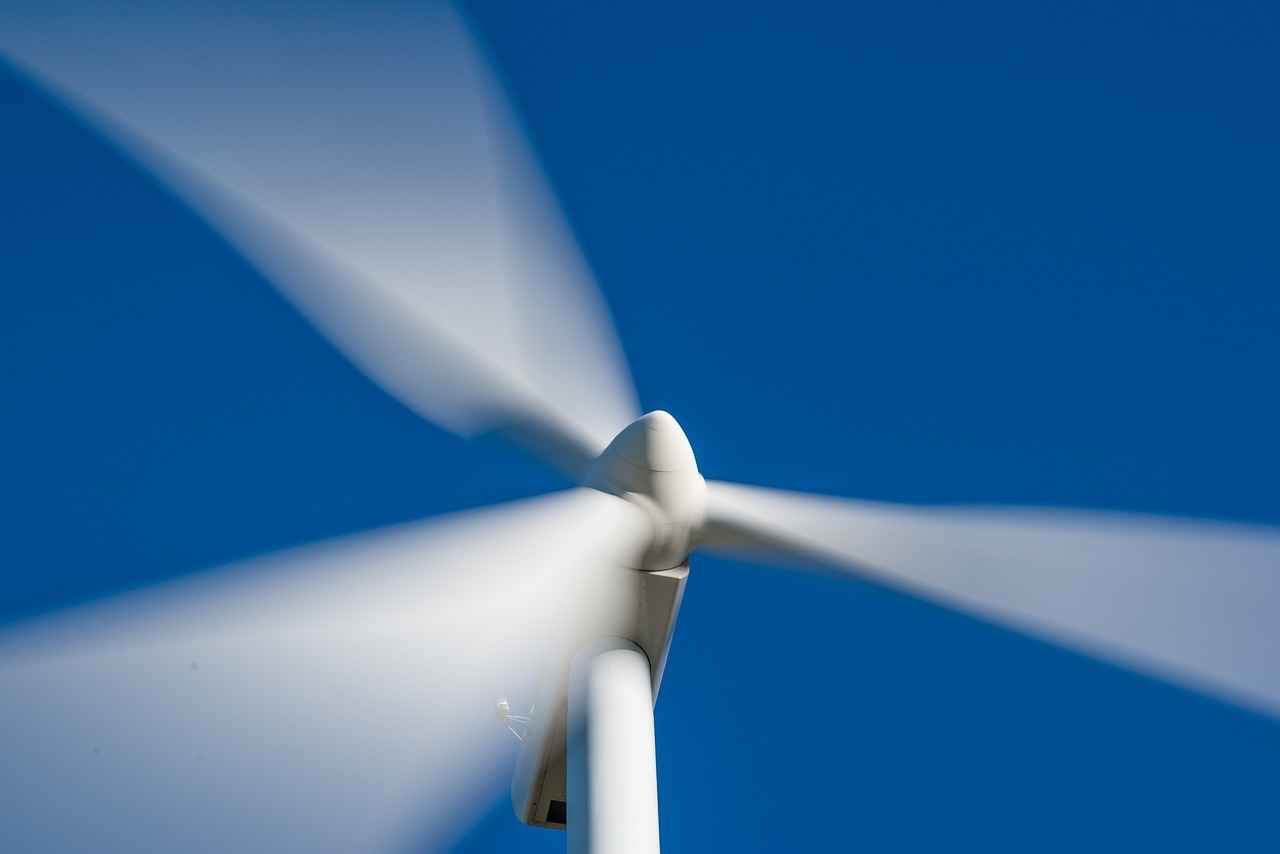
Community Involvement in Renewable Energy
In West Bengal, the transition to renewable energy is not just a top-down approach; it is significantly bolstered by the active participation of local communities. These communities are at the forefront of the green energy revolution, engaging in various initiatives that not only promote sustainability but also empower individuals and foster local economies.
Grassroots Movements Driving Change
Grassroots movements have emerged as powerful catalysts for change in West Bengal. These movements are primarily focused on raising awareness about the importance of renewable energy sources, such as solar and wind power. By organizing workshops, seminars, and community meetings, local leaders are educating residents about the benefits of renewable energy, thereby encouraging them to adopt sustainable practices in their daily lives.
Community-Led Renewable Energy Projects
- Solar Cooperatives: Many communities have formed cooperatives to invest in solar energy projects. These cooperatives allow members to share the costs and benefits of solar installations, making renewable energy more accessible.
- Wind Energy Initiatives: Residents in coastal areas are collaborating to establish small-scale wind farms, which not only generate electricity but also create job opportunities within the community.
Educational Programs and Awareness Campaigns
Education plays a crucial role in fostering a culture of sustainability. Local NGOs and government bodies have initiated programs aimed at educating citizens about renewable energy technologies. These programs often include:
- Workshops on solar panel installation and maintenance.
- Awareness campaigns highlighting the environmental benefits of transitioning to renewable sources.
Conclusion: A Collective Effort Towards Sustainability
The involvement of local communities in renewable energy projects in West Bengal exemplifies a collective effort towards achieving a sustainable future. By actively participating in these initiatives, communities are not only contributing to the state’s green energy goals but are also enhancing their own resilience and economic stability.
Grassroots Movements for Green Energy
In recent years, grassroots movements in West Bengal have gained significant momentum, playing a crucial role in the state’s transition towards sustainable energy solutions. These community-driven initiatives are not only raising awareness about renewable energy but are also actively promoting local involvement in sustainability efforts.
One of the key aspects of these grassroots movements is their ability to mobilize local populations. By organizing workshops, seminars, and community meetings, these groups educate residents about the benefits of renewable energy sources such as solar, wind, and hydropower. This educational outreach fosters a culture of sustainability, empowering individuals to make informed decisions about their energy consumption.
| Grassroots Initiative | Focus Area | Impact |
|---|---|---|
| Solar Community Projects | Solar Energy | Increased local energy production and reduced carbon footprint |
| Wind Energy Awareness Campaigns | Wind Energy | Enhanced understanding of wind energy benefits |
| Hydropower Workshops | Hydropower | Community engagement in hydropower projects |
Moreover, these movements often collaborate with local governments and NGOs to secure funding and resources for renewable energy projects. This collaboration not only amplifies their efforts but also ensures that the projects are tailored to meet the specific needs of the community. For instance, community solar farms allow residents to invest in solar energy without the need for individual installations, making renewable energy more accessible.
Additionally, grassroots movements are vital in advocating for policy changes that favor renewable energy development. By organizing campaigns and lobbying efforts, these groups influence local and state policies, pushing for incentives and support for green energy initiatives.
In conclusion, grassroots movements in West Bengal are essential for advancing the state’s sustainability goals. By fostering community engagement and raising awareness about renewable energy, these initiatives not only contribute to environmental conservation but also empower residents to take an active role in shaping their energy future.
Educational Programs and Awareness Campaigns
In the journey towards a sustainable future, educational programs and awareness campaigns play a pivotal role. By imparting knowledge and fostering understanding, these initiatives empower citizens to embrace renewable energy solutions in their everyday lives.
Through a variety of platforms, including workshops, seminars, and community events, these programs aim to educate individuals about the importance of sustainability. They highlight the benefits of renewable energy sources such as solar, wind, and hydropower, encouraging people to make informed choices that contribute to a healthier environment.
- Community Workshops: Local workshops engage residents, teaching them how to implement renewable energy solutions at home, such as installing solar panels or utilizing energy-efficient appliances.
- School Programs: Educational institutions incorporate sustainability into their curricula, fostering a sense of responsibility among young learners and inspiring the next generation to prioritize green practices.
- Awareness Campaigns: Social media and public service announcements serve to spread the message of sustainability far and wide, reaching diverse audiences and encouraging collective action.
These initiatives not only inform but also inspire action. When individuals understand the impact of their choices, they are more likely to adopt practices that reduce their carbon footprint. For instance, awareness campaigns can lead to increased participation in community solar projects, where residents can contribute to and benefit from shared renewable energy resources.
Furthermore, educational programs often highlight financial incentives available for adopting renewable energy technologies, making it easier for citizens to transition away from fossil fuels. This financial guidance can significantly reduce the barriers to entry for many households.
In conclusion, educational programs and awareness campaigns are essential components in fostering a culture of sustainability. By empowering citizens with knowledge and resources, these initiatives pave the way for a broader adoption of renewable energy solutions, ultimately contributing to a more sustainable and resilient future.
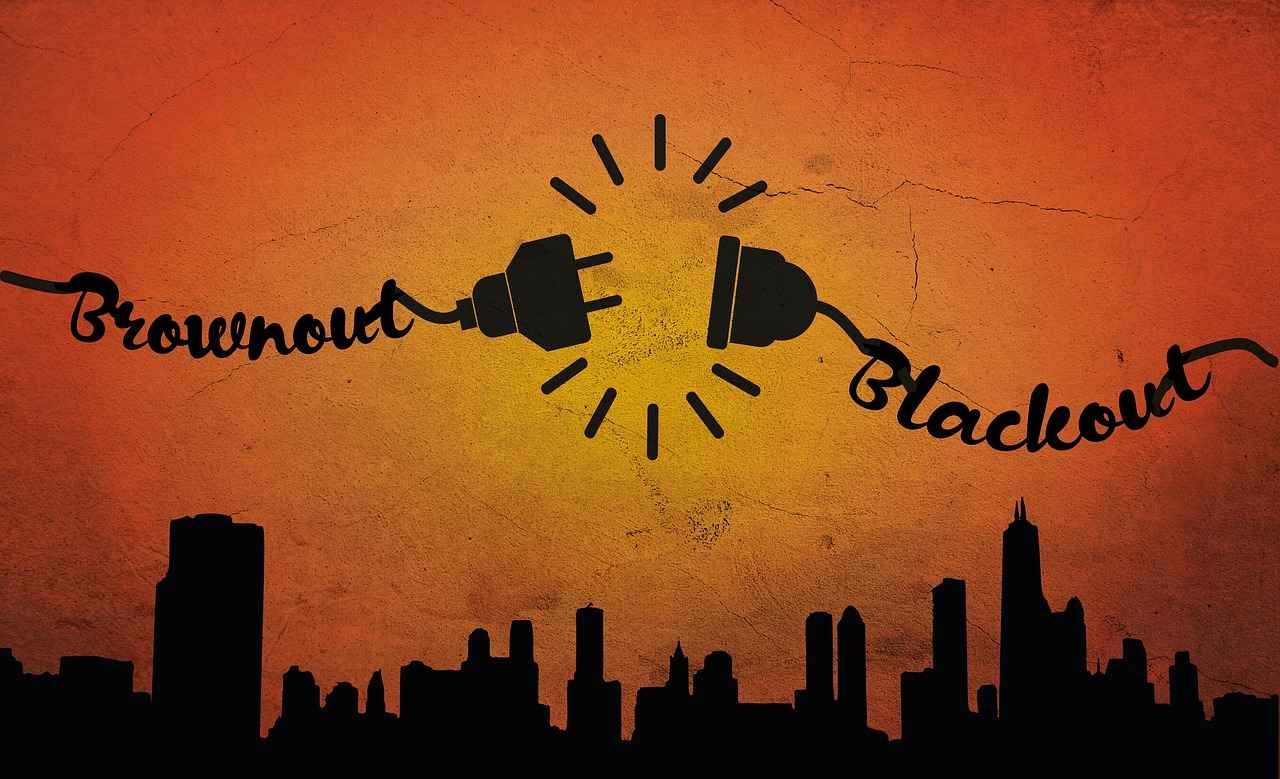
The Future of Green Energy in West Bengal
As West Bengal strides into the future, its commitment to enhancing renewable energy capacity is becoming increasingly evident. The state is poised to leverage technological advancements and foster strong community engagement to meet its ambitious sustainability targets. This forward-thinking approach not only aims to reduce the carbon footprint but also to ensure energy security for its residents.
West Bengal’s vision for the future includes a multi-faceted strategy that encompasses various renewable energy sources. A significant focus is on solar energy, which has seen exponential growth through the establishment of solar parks and community initiatives. These projects are designed to empower local communities while contributing to the state’s overall energy generation.
- Innovative Solar Technologies: The integration of cutting-edge solar technologies, such as solar tracking systems and energy storage solutions, is set to enhance the efficiency of solar power generation.
- Wind Energy Expansion: With the coastal regions providing ideal conditions, wind energy projects are expected to expand, tapping into the vast potential of wind resources.
- Hydropower Optimization: The state is also focusing on optimizing existing hydropower projects to maximize output while ensuring minimal environmental disruption.
Moreover, the collaboration between the government, private sector, and NGOs is crucial. This partnership is aimed at driving green energy initiatives, fostering innovation, and ensuring the successful implementation of projects. By working together, these entities can create a more sustainable energy landscape that benefits all.
In conclusion, West Bengal’s proactive approach towards renewable energy not only reflects its commitment to sustainability but also serves as a benchmark for other states in India. As the state continues to innovate and engage with its communities, it is well on its way to becoming a leader in the green energy revolution.
Innovations in Renewable Energy Technology
are reshaping West Bengal’s energy landscape, making renewable sources increasingly efficient and accessible to the population. As the state embraces cutting-edge technology, several advancements are paving the way for a sustainable energy future.
One of the most significant innovations is the integration of smart grid technology. This technology allows for real-time data monitoring and management of energy distribution, enhancing the efficiency of renewable energy sources such as solar and wind. By optimizing energy flow and reducing waste, smart grids can significantly lower costs and improve reliability.
Moreover, advancements in solar photovoltaic (PV) technology have made solar panels more efficient and affordable. The latest PV cells can convert sunlight into electricity at unprecedented rates, ensuring that even small installations can generate substantial power. This is especially beneficial for rooftop solar projects, which are becoming increasingly popular among residential consumers.
In addition to solar energy, energy storage solutions have seen remarkable progress. Innovations in battery technology, particularly lithium-ion and solid-state batteries, allow for better storage capabilities. These advancements enable renewable energy systems to store excess energy generated during peak production times for use during periods of high demand or low production.
Furthermore, the development of offshore wind energy technology is transforming how wind energy is harnessed. Floating wind turbines can be deployed in deeper waters, where wind speeds are higher and more consistent, leading to greater energy production. This technology opens up new possibilities for wind energy generation in West Bengal’s coastal regions.
Lastly, the use of artificial intelligence (AI) in renewable energy management is revolutionizing operational efficiency. AI algorithms can predict energy demand patterns and optimize energy distribution, ensuring that renewable sources are utilized effectively.
In conclusion, the ongoing innovations in renewable energy technology are crucial for West Bengal as it strives to enhance its energy independence and sustainability. By adopting these advancements, the state is not only improving the accessibility of renewable energy but also setting a benchmark for other regions to follow.
Collaboration with Private Sector and NGOs
is essential in advancing green energy initiatives in West Bengal. The involvement of various stakeholders not only enhances the effectiveness of renewable energy projects but also fosters a culture of innovation and sustainability.
The government of West Bengal has recognized that achieving ambitious green energy targets requires a collective effort. By partnering with the private sector, the state can leverage technological advancements and financial resources that are crucial for the development of renewable energy infrastructure. This collaboration enables the implementation of large-scale projects, such as solar parks and wind farms, which might be challenging to execute solely through public funding.
Moreover, non-governmental organizations (NGOs) play a pivotal role in community engagement and awareness. They often act as a bridge between the government and local communities, ensuring that the benefits of renewable energy projects are equitably distributed. NGOs are instrumental in educating residents about the importance of sustainability and encouraging participation in green initiatives.
Through workshops, seminars, and outreach programs, these organizations raise awareness about renewable energy’s potential, empowering communities to take ownership of their energy production. For instance, community solar projects supported by NGOs allow residents to invest in solar energy, thus promoting local energy independence.
Furthermore, the collaboration between the government, private sector, and NGOs fosters innovation. By sharing knowledge and resources, these entities can develop new technologies and methodologies that enhance the efficiency and effectiveness of renewable energy systems. This synergy not only accelerates project implementation but also contributes to the overall growth of the green energy sector in West Bengal.
In conclusion, the collaboration between the government, private sector, and NGOs is vital for driving green energy initiatives in West Bengal. By working together, these stakeholders can ensure the successful implementation of projects that contribute to a sustainable future, ultimately positioning West Bengal as a leader in India’s green energy revolution.

Conclusion: West Bengal’s Commitment to Sustainability
West Bengal has firmly established itself as a leader in the realm of renewable energy within India, showcasing a proactive approach that highlights its dedication to sustainability. This commitment is not merely a policy statement; it is reflected in the state’s comprehensive strategies and initiatives aimed at fostering a greener future. By prioritizing renewable energy sources, West Bengal serves as a model for other states in India that aspire to transition towards green energy solutions.
The state’s government has introduced a variety of policies and incentives designed to promote investment in renewable energy projects. These initiatives not only encourage the development of solar, wind, and hydropower but also aim to create a robust framework for sustainable energy practices. By facilitating the growth of renewable energy, West Bengal is not only addressing its energy needs but also contributing to the global fight against climate change.
Moreover, the involvement of local communities in these initiatives is vital. Through grassroots movements and educational programs, residents are empowered to take part in the renewable energy revolution. This community engagement fosters a sense of ownership and responsibility towards sustainable practices, further amplifying the impact of the state’s efforts.
Looking ahead, West Bengal is poised to enhance its renewable energy capacity even further. With a focus on innovation and collaboration between the government, private sector, and non-governmental organizations, the state is on a path to achieving ambitious sustainability targets. The integration of advanced technologies and community-driven initiatives will be crucial in realizing a future where renewable energy is the norm rather than the exception.
In conclusion, West Bengal’s commitment to renewable energy exemplifies a forward-thinking approach that not only addresses local energy demands but also sets a precedent for sustainable development across India. Its proactive strategies and community involvement make it a beacon of hope in the transition to a greener, more sustainable future.
Frequently Asked Questions
- What is West Bengal doing to promote renewable energy?
West Bengal is actively promoting renewable energy through various government policies, incentives, and community initiatives aimed at increasing solar, wind, and hydropower capacity.
- How does solar energy contribute to West Bengal’s energy needs?
Solar energy initiatives, including solar parks and rooftop installations, are crucial in meeting the state’s rising energy demands sustainably while also creating jobs and fostering community participation.
- What role do local communities play in these green energy initiatives?
Local communities are vital in West Bengal’s green energy revolution, participating in projects, advocating for sustainable practices, and engaging in grassroots movements that raise awareness about renewable energy.
- What are some key hydropower projects in West Bengal?
West Bengal has several significant hydropower projects that aim to enhance energy security and contribute to renewable energy targets while ensuring minimal environmental impact through sustainable practices.
- What is the future outlook for green energy in West Bengal?
The future of green energy in West Bengal looks promising, with plans to enhance renewable capacity through technological advancements and collaborations with the private sector and NGOs to drive innovation.






